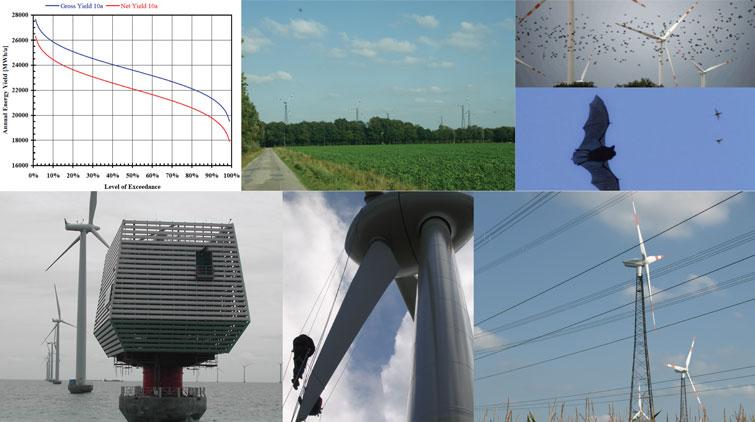Assessment of Losses
ProfEC Ventus performs an accredited service regarding analysis and assessment of losses in accordance to Technical Guideline TR6 Rev.9, as a worldwide applicable reference standard
Losses reduce the net feed-in of energy and can become critical for the financial stability of projects
Losses principally describe the difference between the useable gross energy yield produced by the wind turbine under operating conditions and the net energy yield at the point of measurement for grid injection (mostly at the point of common coupling (point of common coupling - PCC). Location of this point may vary depending on the local regulations and hence the losses, resp. the escaped income related to losses, vary either.
Infrastructure, within which wind energy is embedded, as well as requirements from grid operators or even environmental same as social concerns are getting more complex and hence the likeliness of technical and non-technical losses increases.
May it be that there is too much intermitted renewable energy generating capacity (wind, solar, run-off-river hydro etc.) connected to the grid, or may it be that environmental or social restrictions (bird migration, bats, noise, shadow, etc.) do cause situations, in which a wind turbine or wind park cannot operate at full capacity.
Next to losses as a result of regulations, there are losses related to turbine standstill times for repair, maintenance and malfunctions. Such losses should be assessed, qualified and quantified.
To mention only a few of them, we perform loss assessments related to most importantly:
- Wake effects and obstacles causing a change of the wind field characteristics across the rotor plane
- Availability of the wind turbines (malfunctions, repair and unscheduled maintenance), grid and electrical facilities
- Electrical efficiency regarding self-consumption of the WT as well as efficiency of the wind turbine power electronics (e.g. the transformer) etc.
- Power performance and efficiency of the WT with regards to site specific characters and cut-off hysteresis
- Environmental losses as icing, site access, temperature caused malfunctions
- Power reduction due to sector management (e.g. caused by radar or turbulence thresholds), grid instability, environmental concerns (bird migration, bats, marine mammals, noise, shadow flicker, etc.)
Assessing the probability of unforeseen losses enables to safeguard a solid cash flow prognosis
Several losses, especially regarding environmental concerns, can be derived from regulations that apply to specific situations. Assessment and quantification are comparatively easy in such case.
However, there are losses that do occur spontaneously, arbitrary and unforeseen like hardware repair and (software) malfunctions of wind turbines, or the unexpected behaviour of a given power curve at a particular site. Such losses can be derived based on empirical findings and long-term experience, which some of our speciality working fields.
Taking such loss scenarios into account helps to prevent a cash-flow collapse in critical situations and does safeguard financial stability of a project, as it enables the project operator to form accordingly quantified financial reserves.
Knowing precisely the losses prevents wrong expectations
We assess losses following most modern approaches and in compliance with FGW TR6 Rev.9. A realistic and accurate loss assessment, avoiding too optimistic as well as too pessimistic assumptions, helps the investors to negotiate suitable PPAs, define a more accurate financing strategy, reducing equity capital ratio, interest rates and financial guarantees to be provided by the lender.


 English
English العربية
العربية











